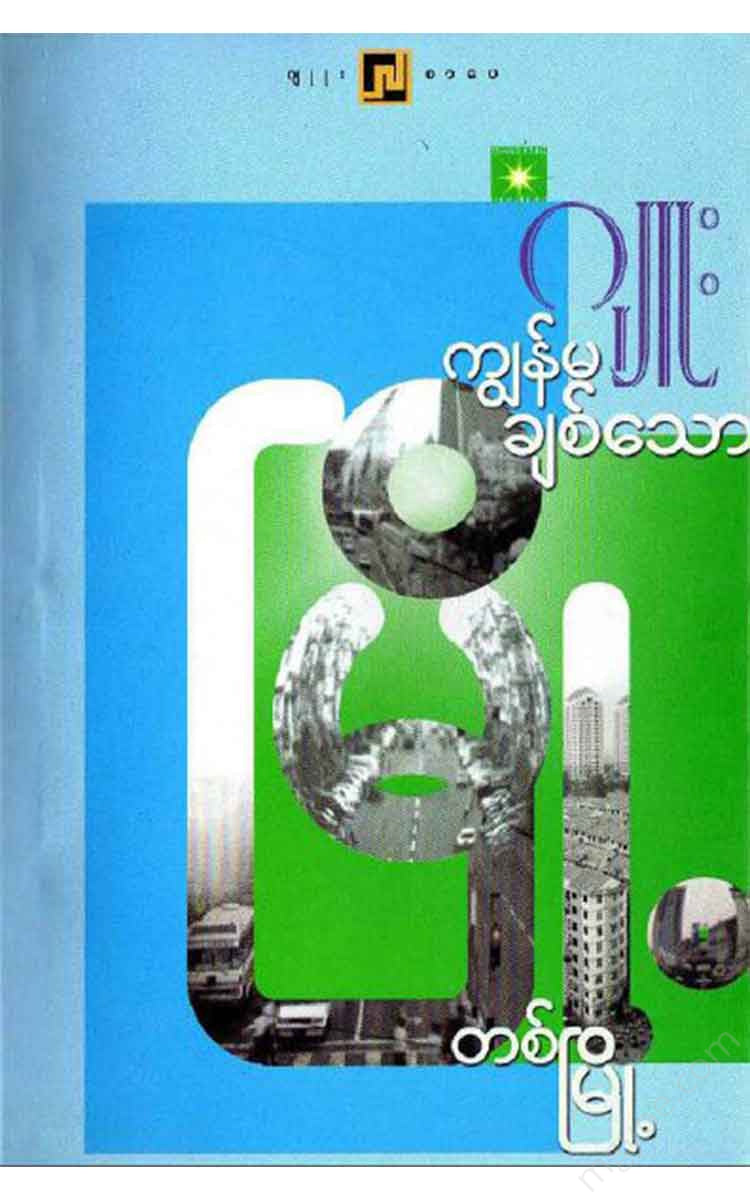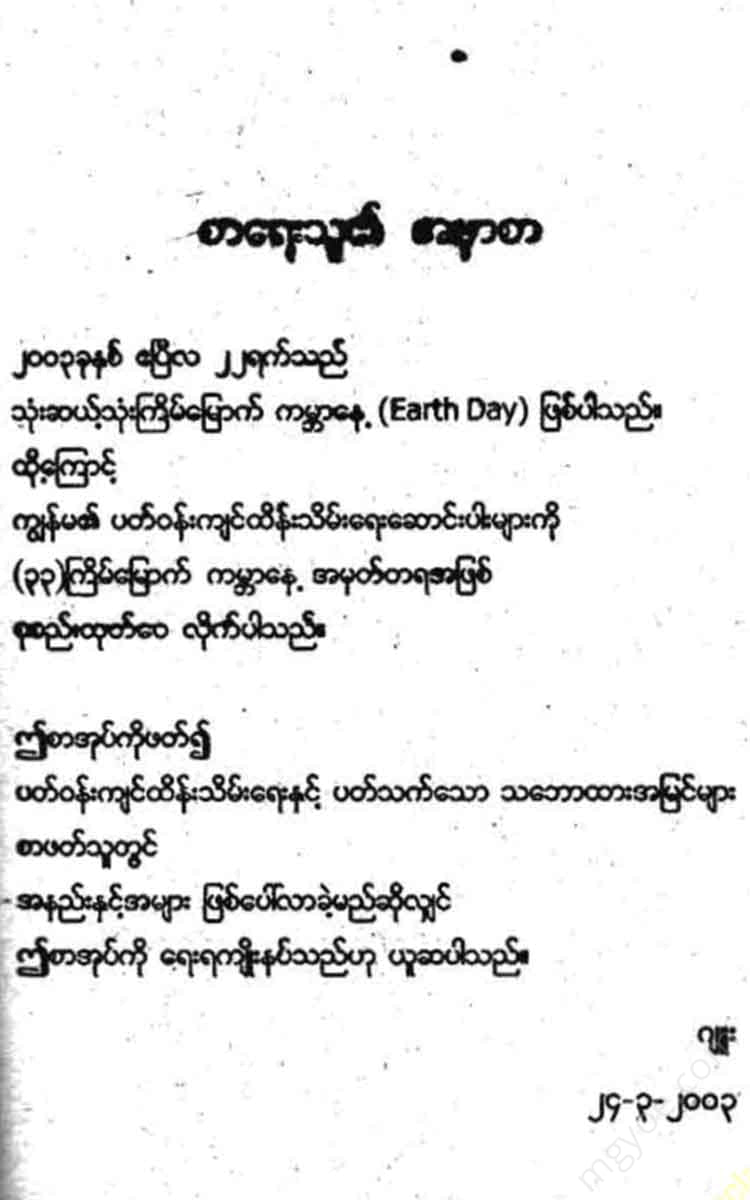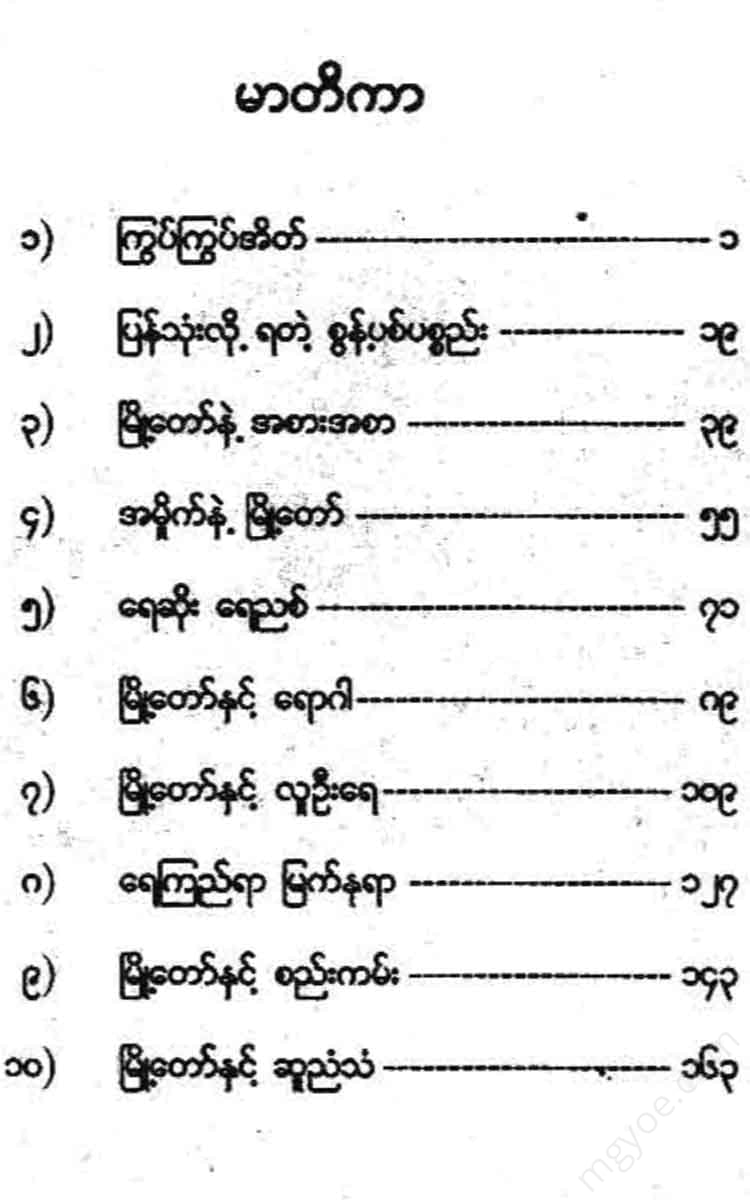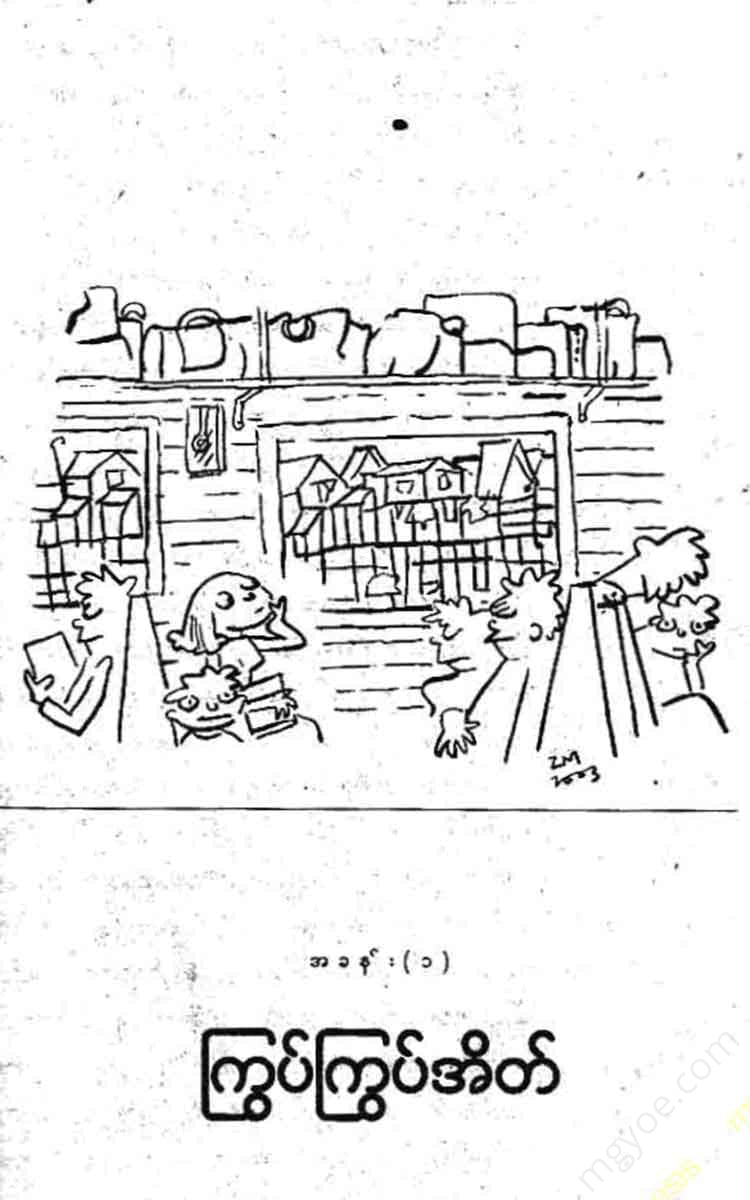Other Websites
Jude - A city I love
Jude - A city I love
Couldn't load pickup availability
My daughter,
In December, Aunty went to Mandalay for a short while. It was a very short trip. Three or four days. I will only tell you about the confusing experiences and jokes I had in the upper train compartment when we meet in person. What sticks in my mind about the trip are the views along the train tracks. Nothing unusual. From my experience riding the Yangon-Mandalay train many times, these are old scenes that I see again and again.
The scenery along the railway and the scenery along the road (although they may seem similar, there is a major difference. This is because they are views of houses along the road. Houses along the road face the road, so the view that passengers see from the car is usually the front view of the house. The railway is the opposite of the road. Houses along the railway are often built with their backs to the railway and turned in the other direction, my dear. The railway is built from the back of the houses, right? So when a train passenger looks out the window, they can only see the back view of the houses. If you want to see the real, unadorned view of a house, you have to look through the train window. In that view, there are no flower pots, small plants, or beautiful shrubs like the front view of the house.
Because it is in the back, you can see the clothesline. Even the clothesline, the Yo-Puso and the Aw usually take up space in front of the house, so what you usually see are women's clothes and shirts. The main thing is the clothesline. In houses with children, there are old diapers and blankets, old bedspreads, and some with small tears and patches. It looks like children's clothes. You can also see broken radiators, washing clothes on a pedestal or a pile of bricks or wooden figures. In houses without a bathroom, the women's bathing area is in the back. In houses where pigs, chickens, and goats are raised, you can see animals lying on their backs with a bowl of food, a bowl of milk, and a bowl of milk.
What makes Auntie feel uneasy is the garbage that can be seen under the fence and outside the fence, the piles of garbage in the house, the dirt that is mixed with the garbage and soil, and the torn bags of garbage that can be seen inside.
If we look at the ratio of waste generated by a household to its value, there is no definitive answer as to what types of waste would be produced, but I think it is undeniable that the most waste is plastic bags. Just look at the garbage pile in my house.
The trash can was filled with various types of plastic bags containing leftover rice, leftover vegetables, plastic bags containing leftover vegetables, plastic bags containing garbage from sweeping up the dust that had accumulated on the roof of the house, and plastic bags containing torn pieces of paper and cans.
Where do you get those fancy bags?
Nowadays, when you buy anything, you put it in a plastic bag with the kids. If you buy fifty potatoes, you get a plastic bag that stretches for fifty, if you buy ten kyats of split peas, you get a plastic bag, if you buy twenty tomatoes, you get a plastic bag. I think this era can be called the plastic age, or the plastic bag age. When I was young, my aunts, my mother, and my daughter would always take a handkerchief with them when we went shopping. The handkerchief was woven from canes. I have seen many different ways to hold a handkerchief. In the past, when I was young, I used to hold a handkerchief in a circle, A market basket with a single handle and a woven basket of flowers and leaves on the bottom of the basket. If you are tired of pulling it by hand, if your hands and fingers hurt, you can hold the handle at your elbow and hold it with your hips - the portable hand-pulled basket has changed a bit. The basket is held by two handles, and the length is four feet. In later times, colorful plastic baskets appeared, so the baskets at home were stuck to the iron hooks in the oven and became dull. Plastic has become a material used in daily shopping. Plastic has become a very important and useful alternative, my daughter.
Before the advent of plastic bags, what did you and your aunts use to pack?
When we were young, we used to wrap meat and fish in big paper. I think we didn't really care if these big paper were leading to deforestation. It's good to use it, and if we bought flowers, we wrapped the bouquet in paper. "Maung Ma" If you buy soaked green beans, soaked green beans, or sprouted beans, you use one big paper or two. We put them together so that they overlap, and we tied them together with small bamboo sticks a little bigger than toothpicks at the bottom. 2 Put the peeled beans in the bag, and fold the top of the paper back over the paper, and tie it together with a stick. 7 When you wrap it neatly, it's ready.
Another type of packaging that is often used when buying ready-to-eat foods such as bread, crackers, and salads is banana peel. The inner (top) side of the banana peel is usually rubbed with a cloth to make it shiny, and then the food is wrapped in it.
Another type is banana leaves. Banana leaves are used to wrap small foods in the middle of the country. In some areas, instead of banana leaves, they use lotus leaves. They are tied with a stick to close the package. If they are not, they are usually tied with string. When my mother was young, she used to buy tea in bundles. Banana tea is actually just tea leaves that are left over from her daughter's tea. The tea is wrapped in long, thin strips of banana leaves. When the bundles are tied with string, the green banana leaves and white string look very beautiful. They are cylindrical tea bags. They are usually sold in packs of 10, packs of 10, etc.
And there's one thing I remember. The palm cake I ate when I was little was a type of palm cake that was sold by cutting it into large pieces with a knife. Another type I remember is a type of palm cake that is wrapped in banana leaves and shaped like a kantochon. The banana leaves are not bodhi leaves, but are called pinnae leaves, or pinnya leaves. That's the type.






